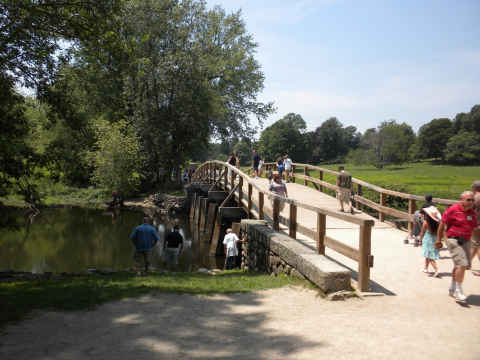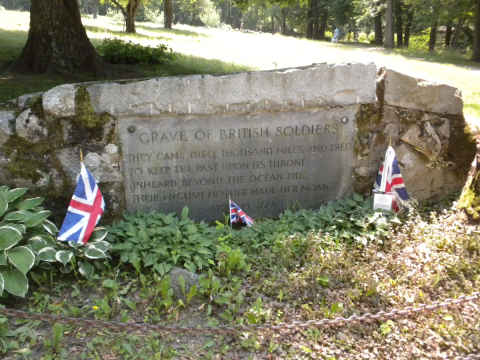We started out on our marathon 14 hour tour of the Boston area with a ride through the historical towns of Lexington and Concord. These towns were instrumental in our nation’s history. The battle of Lexington and Concord initiated the Revolutionary War.
Some stories indicate that one of the first shots of the war were fired by Elisha Jones from his home that is know known as the “Bullet Hole House“.
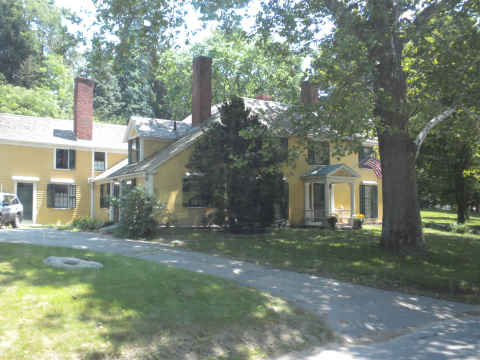
A shot returned by one of the British Regulars (soldiers) struck the house and the resulting bullet hole has been preserved.
The main battle took place at the Old North Bridge, only a few hundred yards away.
The British were soundly defeated and retreated. The remaining dead British Regulars were buried here, only about 100 feet from the bridge. (Click Photo to enlarge and read message.)
A statue in Lexington honors the Minutemen, teams of colonial militia that met the British Regulars initial advances.
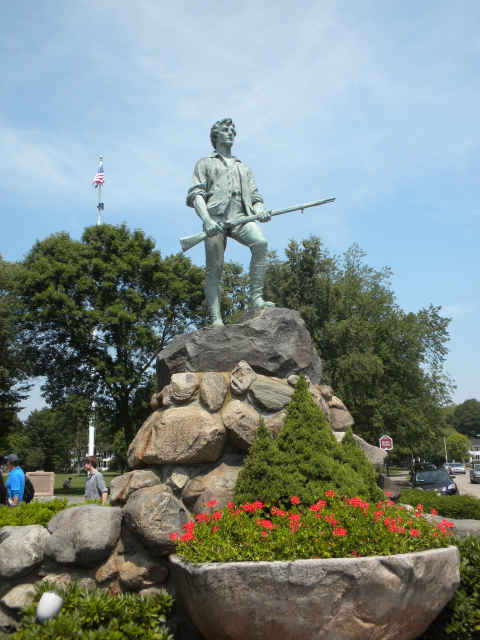
The meeting place for the Minutemen, Wright’s Tavern, still stands. It is also the meeting place of the Provincial Congress.
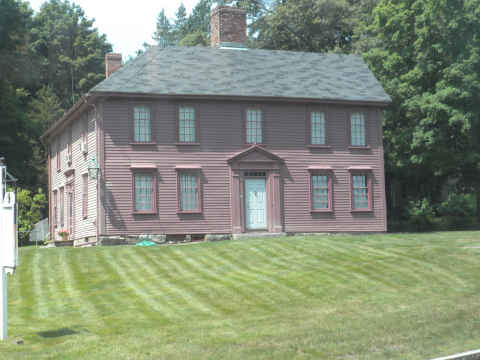
The Revolutionary War, notwithstanding, the town of Concord has many other bragging rights. Along the same street (Lexington Road) where you find the Bullet House, the homes of many notables can be found.
Ephraim Bull, who developed the Concord Grape had a nice little place, built in the 1600’s.
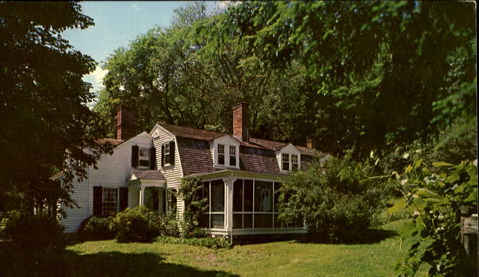
On down the street you find Ralph Waldo Emerson.
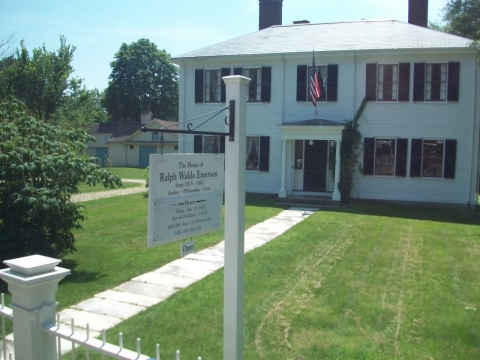
Then there’s Orchid house, home of Louisa May Alcott, author of “Little Women”.
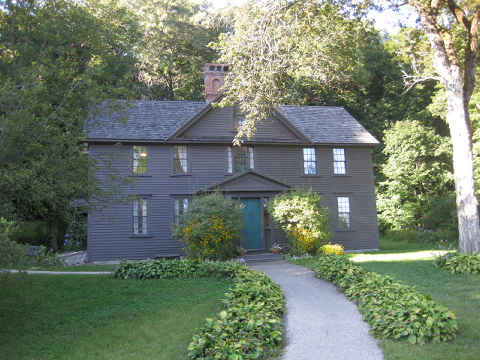
Other neighbors included Nathanial Hawthorn and Henry David Thoreau. These neighbors lived so closed together, except perhaps separated by decades or centuries.

